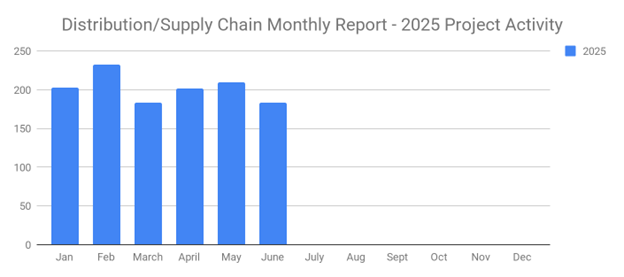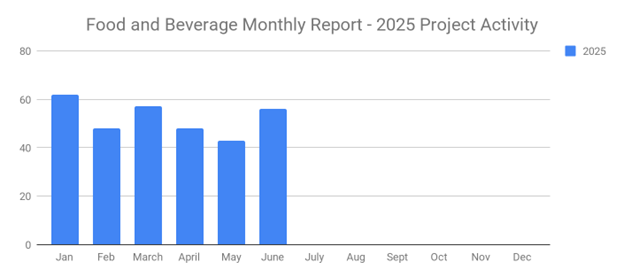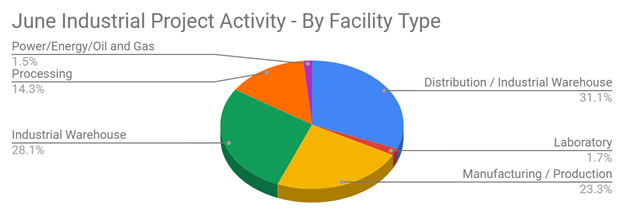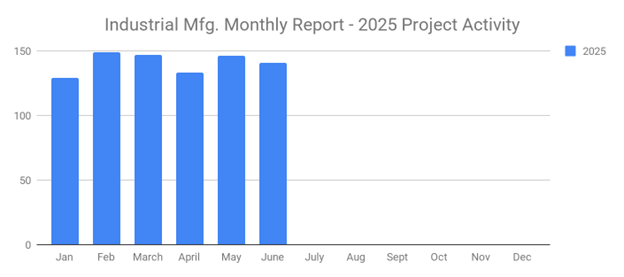
Whether you're a new or seasoned sales rep, you might be wondering what a relocation, expansion or renovation sales cycle for facilities consists of. While different B2B companies use their own unique approach to selling products or services, most follow a similar sales cycle consisting of seven steps. From prospecting to following up with the customer, each of these seven steps is critical in selling to relocating, expanding or renovating companies. For a brief overview of the seven steps, keep reading.
#1) Prospecting
A form of outbound marketing, prospecting is the first step of selling to relocating, expanding or renovating companies. It involves sending reaching out to potential customers with whom your B2B company has had no prior contact. Prospecting may include cold emailing, cold calling, cold direct mailing and other forms of outbound marketing. Alternatively, it may consist of purchasing Project Reports from SalesLeads, which are identified projects in your industry, or a database such as SalesLeads Sales & Marketing Intelligence database. This database contains valid names, email addresses, and phone numbers for first time contacts. Try a few projects reports, or sign up for a complimentary account to access the database as well.
#2) Message Creation
The second step of relocation, expansion or renovation selling is message creation. Assuming you've performed enough prospecting, you should be ready to communicate with a potential facilities customer. Before this can occur, though, you'll need to create your sales message. This is arguably one of the most important steps in relocation, expansion or renovation selling. If your sales message isn't convincing and tailored to the needs of the office industry, you'll fail to convert prospects into customers.
When creating your sales message, consider the format how potential customers will respond to it. According to a report by LinkedIn, 64% of B2B buyers say podcasts are "valuable" for research purposes. An even more effective content format for B2B selling, however, is infographics, with 76% of B2B buyers saying they are useful when researching products or services to purchase.
#3) Approach
After creating your sales message, you can approach the potential customer. Whether it's over the phone, by email, (remember to try SalesLeads Sales & Marketing Intelligence database) online chat, social media or a face-to-face meeting, this will be your first communication with the potential customer. As a result, it can make or break a sale. It's important to note that approaching doesn't consist of pitching your sales offer. During the approach stage, you simply want to touch base with the potential customer while piquing his or her interest in your relocation, expansion or renovation service.
#4) Pitch
Now it's time to pitch your relocation, expansion or renovation company's product or service to the potential facilities customer. Also known as the presentation stage, pitching is critically important to your relocation, expansion or renovation sales effort. During this step, you must demonstrate the benefits of your B2B company's product or service and how it can help the potential customer's facilities business achieve their goals and objectives more easily.
#5) Overcoming Objections
Not all potential customers will agree to purchase your relocation, expansion or renovation company's product or service Statistics show that B2B companies experience an average conversion rate of just 6%. The good news is that you can often overcome common sales objections by addressing them directly, thereby increasing your conversion rate and boosting your relocation, expansion or renovation company's sales revenue. Think about what kind of sales objections you'll encounter when pitching your product or service to potential customers, and try to find an answer to them. If a potential customer believes your product or service is too expensive, for example, perhaps you can present similar products or services offered by your competitors at an even higher price.
#6) Closing
The sixth step of selling relocation, expansion or renovation services and products is closing the deal. Of course, closing involves making the final push to convince a prospective customer to purchase your B2B company's product or service. Assuming you've prepared answers to common sales objections, you should be able to convert a decent amount of prospects into paying customers. After the prospect has agreed to make a purchase, get his or her payment information (P.O., credit card, Invoice, Letter of Intent) immediately so that you can process and finalize the sale. Neglecting to take immediate action after a prospect says "Yes, I want to buy it" will only lower your chances of scoring a sale.
#7) Following Up
After a customer has purchased one of your relocation, expansion or renovation company's products or services, you should follow up with him or her. Following up is important for several reasons. First, it offers the opportunity to gain insight and feedback into the customer's service, which you can use to improve your relocation, expansion or renovation company's products or services. Second, it allows you to address any of the customer's concerns or complaints, which could otherwise discourage the customer from making future purchases with your B2B company. Third, you can ask customers for referrals, assuming they were satisfied with their purchase, during a followup.
From prospecting to following up with customers, each of these seven steps listed here are essential to selling to facilities. If you skip even one of these steps, you could struggle to generate sales. To succeed with relocation, expansion or renovation selling, familiarize yourself with all seven steps while learning the right approach for each step. And if you discover a particular step is causing you trouble, try experimenting with different tactics to see what works and what doesn't.
What to learn more? Get in Touch
Latest Posts
-

June's New Distribution and Supply Chain Planned Projects Return to March’s 183 Confirmed Figure
-

Food and Beverage Rebounds with 56 New Planned Projects Igniting Growth After Decline
-

June 2025’s New Industrial Construction Projects Grew 7% Month-Over-Month
-

Q2 Industrial Manufacturing Soars 31% for Planned Projects Over $100M; June Planned Industrial Projects Hit 141

